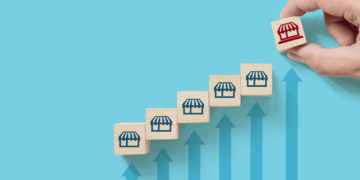In today’s highly competitive global market, success is defined not only by top-line revenue but also by the efficiency and sustainability of internal operations. One of the most powerful strategies companies are now embracing is the development of sustainable supply chains. Integrating environmental, social, and economic considerations into supply chain practices not only fulfills corporate social responsibility but also drives significant improvements in profit margins. This article explores the multifaceted benefits of sustainable supply chains, offering a comprehensive guide on why and how they can transform business performance.
The rapid pace of globalization and increasing consumer awareness have pushed companies to reconsider their traditional business models. Modern enterprises are learning that sustainable practices are not a luxury, but a necessity—both ethically and economically. Sustainable supply chains, which focus on reducing waste, minimizing environmental impact, and promoting ethical labor practices, have emerged as a cornerstone of forward-thinking business strategies. Not only do these practices contribute to the greater good, but they also unlock new efficiencies and open doors to untapped revenue streams.
Sustainability in the supply chain goes beyond recycling or energy conservation. It encompasses a holistic approach that involves every stakeholder—from suppliers and manufacturers to logistics providers and end consumers. In doing so, companies are able to identify inefficiencies, mitigate risks, and enhance brand reputation, all of which lead to improved profit margins.
The Evolution of Supply Chain Management
Over the past few decades, supply chain management has evolved from a narrow focus on cost-cutting to a broader strategy that values resilience, flexibility, and sustainability. Traditional supply chains were primarily concerned with volume and speed. However, environmental challenges, regulatory changes, and shifting consumer values have necessitated a new approach. Today’s sustainable supply chains balance economic goals with environmental stewardship and social responsibility.
Historically, the pursuit of lower costs sometimes came at the expense of quality, ethical labor practices, and environmental health. With global scrutiny increasing and market dynamics shifting, companies now recognize that sustainability can coexist with profitability. In fact, by implementing eco-friendly practices, firms can reduce waste, streamline operations, and secure long-term gains. The evolution of supply chains into sustainable systems marks a significant paradigm shift in modern business.
A sustainable supply chain is one that integrates environmentally and socially responsible practices into every phase of the production process. This involves:
- Designing processes that minimize resource consumption and reduce carbon footprints.
- Sourcing materials ethically, ensuring that suppliers adhere to high standards of labor rights and environmental protection.
- Optimizing logistics to reduce emissions and lower transportation costs.
- Engaging stakeholders throughout the supply chain to promote transparency and accountability.
These elements work together to create a supply chain that not only supports sustainable development but also enhances operational efficiency and profitability.
Key Business Benefits of Sustainable Supply Chains
Implementing sustainable supply chain practices can yield significant advantages for businesses. The benefits include, but are not limited to, the following:
A. Cost Reduction:
Sustainable practices often lead to a reduction in waste and more efficient use of resources. This minimizes operational expenses over time.
B. Enhanced Efficiency:
By streamlining processes and integrating innovative technologies, companies can reduce lead times and improve overall supply chain efficiency.
C. Improved Brand Image:
Consumers are increasingly drawn to brands that demonstrate a commitment to environmental and social causes. A robust sustainable supply chain enhances corporate reputation and drives customer loyalty.
D. Regulatory Compliance:
Adopting sustainable practices helps companies stay ahead of evolving regulatory requirements, thereby avoiding potential fines and sanctions.
E. Risk Mitigation:
Sustainable supply chains are more resilient to disruptions—be it due to natural disasters, political instability, or economic fluctuations.
F. Customer Loyalty:
Ethical sourcing and transparent practices foster trust among consumers, which can translate into long-term customer relationships and repeat business.
G. Innovation Opportunities:
The pursuit of sustainability often sparks innovation, encouraging companies to adopt new technologies and explore creative solutions that boost productivity.
These benefits collectively contribute to a healthier bottom line, ensuring that companies not only do good but also do well financially.
How Sustainable Supply Chains Enhance Profit Margins
Sustainable supply chains play a crucial role in improving profit margins by addressing various aspects of business operations. Below are several ways in which sustainability leads to enhanced profitability:
1. Reduction in Operational Costs
Investing in sustainable practices can significantly lower operational costs. For instance, reducing energy consumption through efficient practices or renewable energy sources cuts down on utility expenses. Similarly, minimizing waste through better inventory management and recycling initiatives leads to cost savings. When companies optimize resource use, they not only protect the environment but also see a direct impact on their cost structure.
2. Enhanced Efficiency and Productivity
Modern sustainable supply chains incorporate advanced technologies such as automation, the Internet of Things (IoT), and data analytics. These tools improve the tracking of goods, optimize routing in logistics, and forecast demand more accurately. By reducing inefficiencies and streamlining processes, companies can operate more smoothly and at a lower cost per unit produced. Increased efficiency directly contributes to higher profit margins.
3. Strengthened Supplier Relationships
Sustainable supply chains foster strong, long-term relationships with suppliers who share a commitment to ethical practices. These partnerships lead to better pricing, quality control, and reliable supply. When suppliers and buyers work closely, the entire supply chain becomes more agile and responsive, reducing delays and mitigating risks associated with supply shortages.
4. Enhanced Risk Management
Risk mitigation is an essential element of sustainable supply chains. Companies that proactively address environmental and social risks are better prepared for regulatory changes, supply disruptions, or reputational damage. By implementing robust risk management practices, businesses can avoid costly setbacks and maintain a steady revenue stream. A resilient supply chain is less vulnerable to unexpected disruptions, ensuring stable profit margins.
5. Increased Consumer Trust and Market Share
Consumers today are more informed and concerned about the environmental and social impact of their purchases. Brands that commit to sustainability can tap into a growing market of conscious consumers. Enhanced consumer trust not only drives sales but also allows companies to charge premium prices for products that are perceived as responsible and ethical. This increased market share and higher product value lead to improved profit margins.
6. Long-Term Strategic Advantage
Sustainability is not a short-term trend; it is a long-term strategic advantage. Companies that invest in sustainable practices today are better positioned to meet future regulatory standards, adapt to changing market conditions, and harness technological innovations. This foresight ensures that businesses remain competitive and profitable in the long run.
Strategies for Implementing a Sustainable Supply Chain
Building a sustainable supply chain requires a well-thought-out strategy that encompasses multiple aspects of operations. Below are key strategies that companies can adopt:
A. Leadership and Commitment:
Senior management must champion sustainability initiatives. This involves setting clear goals, allocating resources, and fostering a culture that values ethical practices throughout the organization.
B. Supplier Collaboration and Integration:
Working closely with suppliers is vital. Companies should establish criteria for ethical sourcing and engage suppliers in sustainability training and audits to ensure compliance with environmental and social standards.
C. Investment in Green Technologies:
Embracing modern technology can streamline operations and reduce environmental impact. Technologies such as blockchain for supply chain transparency, AI for predictive analytics, and IoT for real-time monitoring are essential tools for modern sustainable supply chains.
D. Streamlined Logistics and Emission Reduction:
Optimizing transportation and distribution processes minimizes carbon emissions and reduces costs. Companies can leverage route optimization software and invest in eco-friendly vehicles to achieve these goals.
E. Transparency and Traceability:
Maintaining a transparent supply chain builds consumer trust. Technologies like RFID tags and blockchain not only ensure product authenticity but also provide data that can be used to improve efficiency and reduce waste.
F. Employee Training and Development:
A knowledgeable workforce is crucial to the success of sustainability initiatives. Regular training programs help employees understand the importance of sustainable practices and equip them with the skills to implement changes effectively.
G. Continuous Improvement and Innovation:
Sustainability is an ongoing journey. Companies should continuously review and refine their supply chain processes, keeping an eye on emerging trends and innovative practices that could further enhance efficiency and profitability.
By incorporating these strategies, companies can develop resilient and efficient supply chains that deliver both environmental and financial benefits.

Overcoming Challenges in Building Sustainable Supply Chains
While the benefits of sustainable supply chains are clear, companies often face significant challenges when transitioning from traditional models. Identifying these obstacles and developing strategies to overcome them is essential for long-term success.
A. Higher Initial Investment Costs:
Implementing sustainable practices—such as upgrading technology, sourcing eco-friendly materials, or modifying production processes—often requires a substantial upfront investment. However, these costs are frequently offset by long-term savings in energy, waste management, and improved operational efficiency.
B. Resistance to Change:
Shifting to a sustainable supply chain may encounter resistance from within the organization. Employees and managers accustomed to traditional practices may be reluctant to adopt new methodologies. Overcoming this resistance requires strong leadership, clear communication, and training programs that emphasize the benefits of change.
C. Complex Global Regulations:
Different countries have varying environmental regulations and labor standards, making it challenging for multinational companies to standardize their practices. Staying compliant in all regions requires continuous monitoring of legal requirements and the flexibility to adapt practices as needed.
D. Supply Chain Visibility Issues:
Achieving transparency across a global supply chain can be difficult, particularly when working with numerous suppliers. Investment in advanced tracking technologies and data analytics is critical to overcoming visibility challenges and ensuring accountability at every stage.
E. Balancing Profitability and Sustainability Goals:
Some businesses may view sustainability as being at odds with profit maximization. However, strategic investments in sustainability often yield significant returns over time. Companies must be willing to adopt a long-term perspective, recognizing that short-term costs can lead to substantial long-term benefits.
Strategies to Overcome Challenges
To successfully navigate these challenges, businesses can adopt several effective strategies:
A. Develop a Phased Implementation Plan:
Rather than attempting a complete overhaul overnight, companies should implement sustainable practices gradually. This allows time for adjustment and ensures that investments are spread over a manageable period.
B. Engage Stakeholders Early:
Involving employees, suppliers, and customers in the transition process fosters a sense of shared responsibility and smooths the path toward adoption.
C. Leverage Government Incentives:
Many governments offer incentives for businesses that adopt eco-friendly practices. Tapping into these programs can help offset initial investment costs.
D. Invest in Training and Technology:
By equipping teams with the necessary skills and investing in state-of-the-art technology, companies can accelerate the transition to a sustainable supply chain while mitigating resistance to change.
E. Monitor, Measure, and Adapt:
Regular performance reviews, sustainability audits, and feedback mechanisms enable companies to identify bottlenecks and adjust strategies as needed, ensuring continuous improvement.
Real-World Examples of Sustainable Supply Chains
Many leading companies have successfully integrated sustainability into their supply chain operations, setting benchmarks for others in the industry. These real-world examples illustrate how sustainable practices can drive profitability and long-term success.
Case Study 1: A Global Retailer’s Transformation
A renowned global retailer revamped its supply chain by focusing on energy efficiency and waste reduction. By investing in renewable energy sources and streamlining logistics, the company managed to reduce operational costs significantly. Moreover, enhanced transparency in its supply chain reassured consumers about ethical practices, resulting in improved brand loyalty and increased market share.
Case Study 2: A Multinational Consumer Goods Company
Another multinational consumer goods company embraced sustainable sourcing by partnering with local suppliers who practiced ethical farming and manufacturing. The company implemented rigorous sustainability audits and provided training to its suppliers, which led to improved product quality and consistency. The initiative not only bolstered the company’s reputation but also led to cost savings from reduced waste and improved operational efficiencies.
Case Study 3: A Leading Technology Firm
A leading technology firm integrated advanced data analytics and blockchain technology into its supply chain. This enhanced traceability and allowed the firm to quickly identify inefficiencies and supply chain risks. The move resulted in faster delivery times, reduced emissions, and ultimately, a more resilient supply chain that supported higher profit margins.
Each of these cases highlights the tangible benefits of sustainable supply chain practices and illustrates how a commitment to sustainability can lead to a competitive edge in the market.

Future Trends in Sustainable Supply Chains
The landscape of supply chain management is continuously evolving, driven by technological advances and a growing emphasis on sustainability. Looking ahead, several trends are likely to shape the future of sustainable supply chains:
A. Circular Economy Models:
Moving away from the traditional linear “take-make-dispose” model, circular economy principles promote reuse, recycling, and repurposing of materials. This shift not only reduces environmental impact but also opens new revenue streams through the recovery of valuable materials.
B. Advanced Technologies:
Innovations such as artificial intelligence, machine learning, and blockchain are revolutionizing supply chain transparency and efficiency. These technologies enable real-time monitoring, predictive maintenance, and improved decision-making, all of which contribute to sustainability.
C. Consumer-Driven Change:
As consumers become increasingly informed about environmental and social issues, demand for ethically produced products will continue to grow. Companies that proactively adapt their supply chains to meet these demands will likely enjoy increased market share and enhanced profitability.
D. Stronger Regulatory Frameworks:
Governments around the world are introducing stricter environmental regulations. Companies that build sustainable supply chains today will be better prepared to meet future regulatory requirements, avoiding costly adjustments down the line.
E. Collaborative Ecosystems:
The future of supply chain sustainability lies in collaboration. Stakeholders across the supply chain—from raw material suppliers to retailers—are expected to work together more closely, sharing best practices and innovative solutions to common challenges.
F. Integration of Sustainability Metrics:
The adoption of comprehensive sustainability metrics and reporting standards will become more prevalent. This integration will allow companies to measure the impact of their practices accurately and make data-driven improvements, reinforcing the connection between sustainability and profitability.
Conclusion
The transition toward sustainable supply chains is no longer an optional strategy—it is a business imperative. By integrating environmentally and socially responsible practices into every step of the supply chain, companies can achieve a range of benefits that directly contribute to improved profit margins. From reduced operational costs and enhanced efficiency to strengthened supplier relationships and increased consumer loyalty, the economic advantages of sustainability are substantial.
Moreover, sustainable supply chains position companies for long-term success by building resilience against disruptions and regulatory changes. As global trends continue to favor ethical and eco-friendly practices, businesses that invest in sustainability today will secure a competitive edge in tomorrow’s market.
The journey toward a fully sustainable supply chain involves overcoming challenges such as initial investment costs and resistance to change. However, with strong leadership, strategic planning, and continuous innovation, these obstacles can be managed effectively. The case studies discussed in this article underscore that real-world examples of sustainable practices are not only viable but also profitable.
Looking forward, emerging technologies and a shift toward circular economy models will further enhance the benefits of sustainable supply chains, creating an ecosystem where profitability and environmental stewardship go hand in hand. Companies that embrace these trends will be well-equipped to navigate the complexities of a rapidly changing global marketplace, ensuring that sustainability remains at the heart of their growth strategies.
In summary, sustainable supply chains are a transformative force for modern businesses. They offer a holistic approach that benefits the environment, society, and the bottom line. As organizations continue to refine their strategies and implement innovative practices, the positive impact on profit margins will become increasingly evident. Investing in sustainability is not merely an act of corporate responsibility—it is a strategic decision that drives long-term profitability and success.












